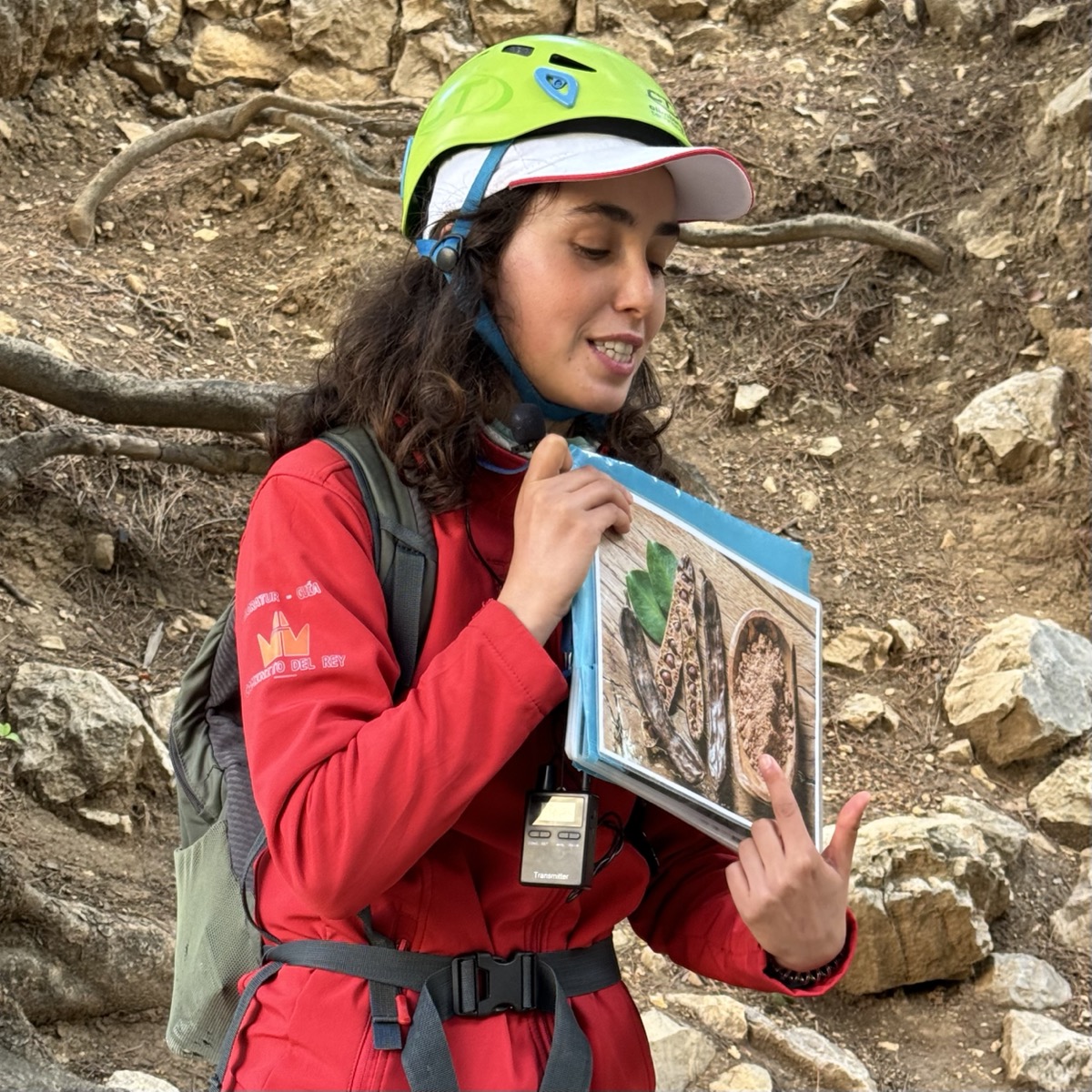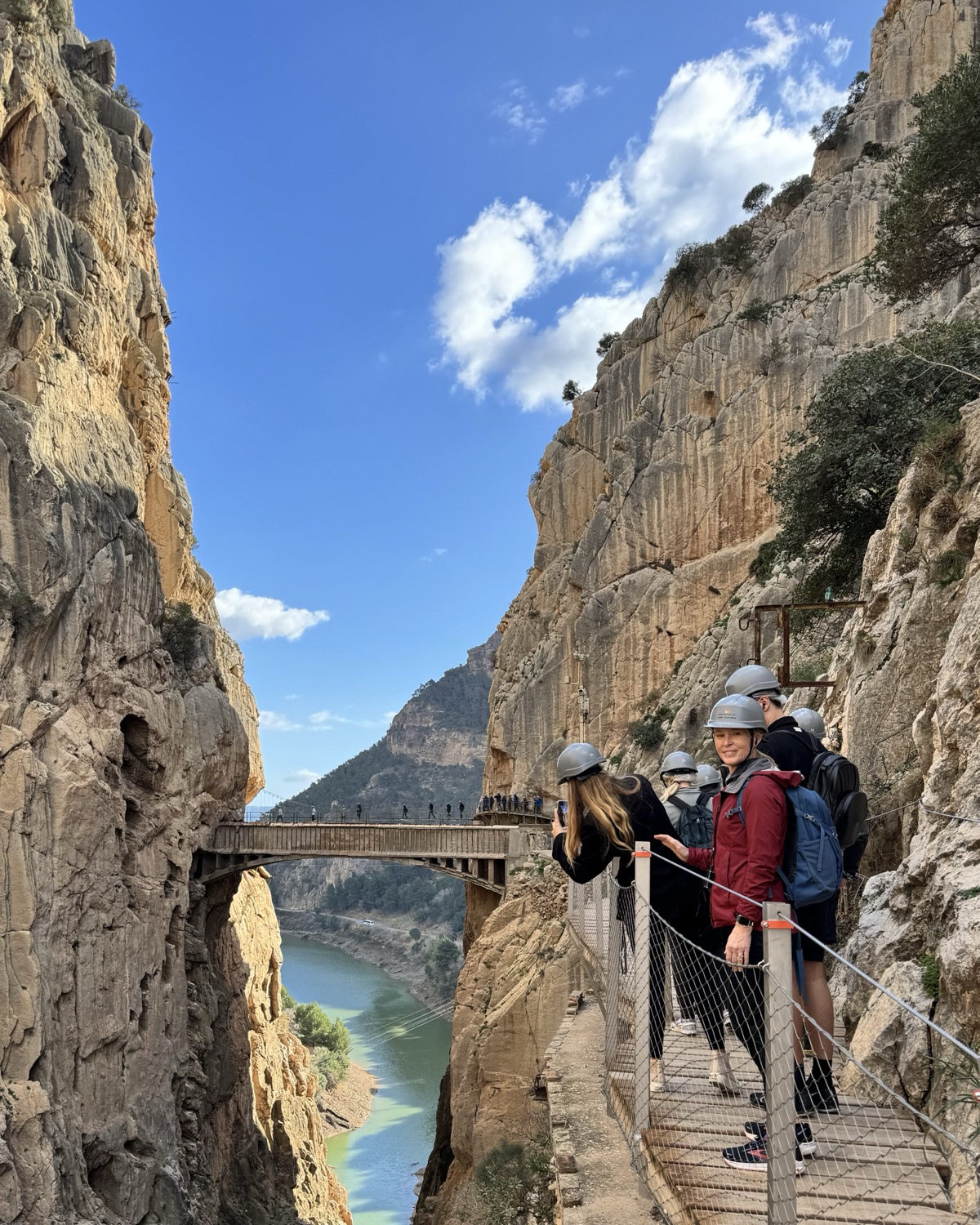Hiking the Caminito del Rey
Before we left for Spain I put together a loose framework for our transitions as we roamed Andalucía. Knowing that we’d get plenty of old Europe culture in the towns we were visiting, I spent time looking for hiking adventures we could add to our itinerary. The Caminito del Rey was a top priority.
 The canyon of the Caminito del Rey
The canyon of the Caminito del Rey
Don’t confuse the Caminito with the Camino de Santiago up in Galicia: this is a caminito after all: a little path. As recently as 2015 this path, originally built to allow workers to service the canal and other hydro-works in the canyon, was in such disrepair that it was considered one of the most dangerous hikes in the world. All that changed with a major investment by a private tour company, culminating in the commercial venture that it has become.
Commercial doesn’t mean it isn’t worth your time or money. By selling timed tickets they can manage the flow through the gorge, and we found the process simple and well organized. We purchased advanced tickets (required, and well in advance if you are trying in the high season) and traveled from Málaga to El Chorro via the Renfe medium distance train. Our train was an out-and-back between Málaga and El Chorro, but there are also trains that run regularly from Sevilla to Málaga and back. Once in El Chorro you are at the end of the caminito in a quaint tiny town on one of the many reservoirs in the area.
Right next to the train station is the bus stop that takes you up to the start of the hike. We purchased our tickets in the booth; the booth takes credit cards, but if you get on the bus at one of the other stops you’ll need cash. A 25 minute bus ride and we were at Restaurante El Kiosko, the launch point for the hike. The entrance to the gorge is still a hike away: about 1 mile if you take the direct path, or 1.5 miles for the long way. We took the long way because we had some time buffer, and were happy that we did. These mountains, canyons, and pine forested valley are beautiful.
 Our wonderful guide Ana
Our wonderful guide Ana
Eventually we arrived at the gated entry to the fun part of the canyon. It was a bit confusing where we were supposed to go, but the staff was helpful and soon we were waiting in the right spot. They run at least two groups through every 30 minutes: some guided, some unguided, some Spanish, some English. Our only ticket option was a guided tour and we’re happy we did it. Our guide Ana was excellent, a young person truly passionate about the history, flora, fauna, and geology of the area.
 About to cross the final bridge on the walkway
About to cross the final bridge on the walkway
The trail is not long: about 2-3 miles inside the gated area, and about 2 miles outside either end. There isn’t much climbing because the manmade walkways combined with the natural paths create a steady descent. We always felt safe and secure, though we did observe some folks hugging the canyon wall and avoiding the edges of the paths.
Our guide pointed out the Aleppo pines, carob trees, and white olive trees. I was the first to spot a small herd of Spanish ibex down in a grassy meadow at the bottom of the canyon. More on those little guys in a future post.
